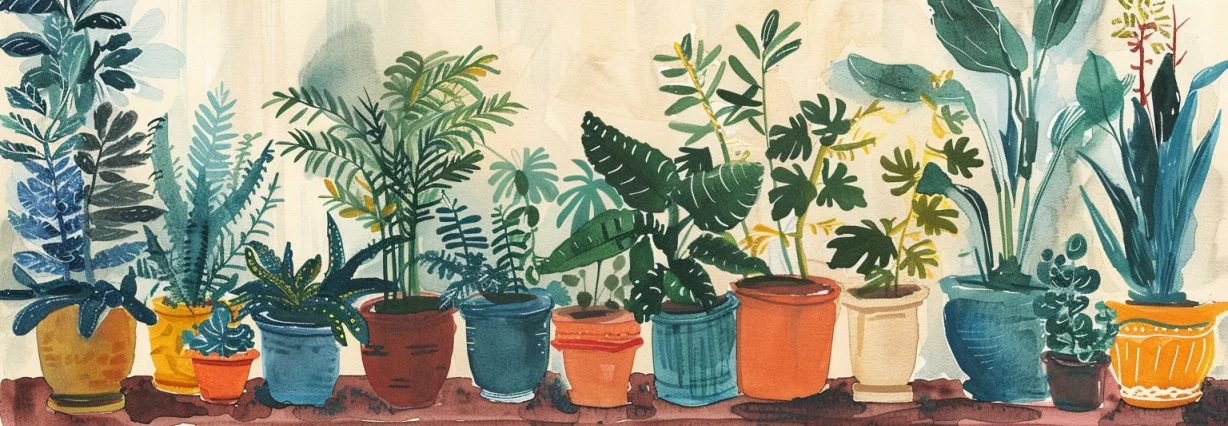Propagation and seed starting are two popular methods of growing plants. Propagation is the process of creating new plants from existing ones, while seed starting involves growing plants from seeds.
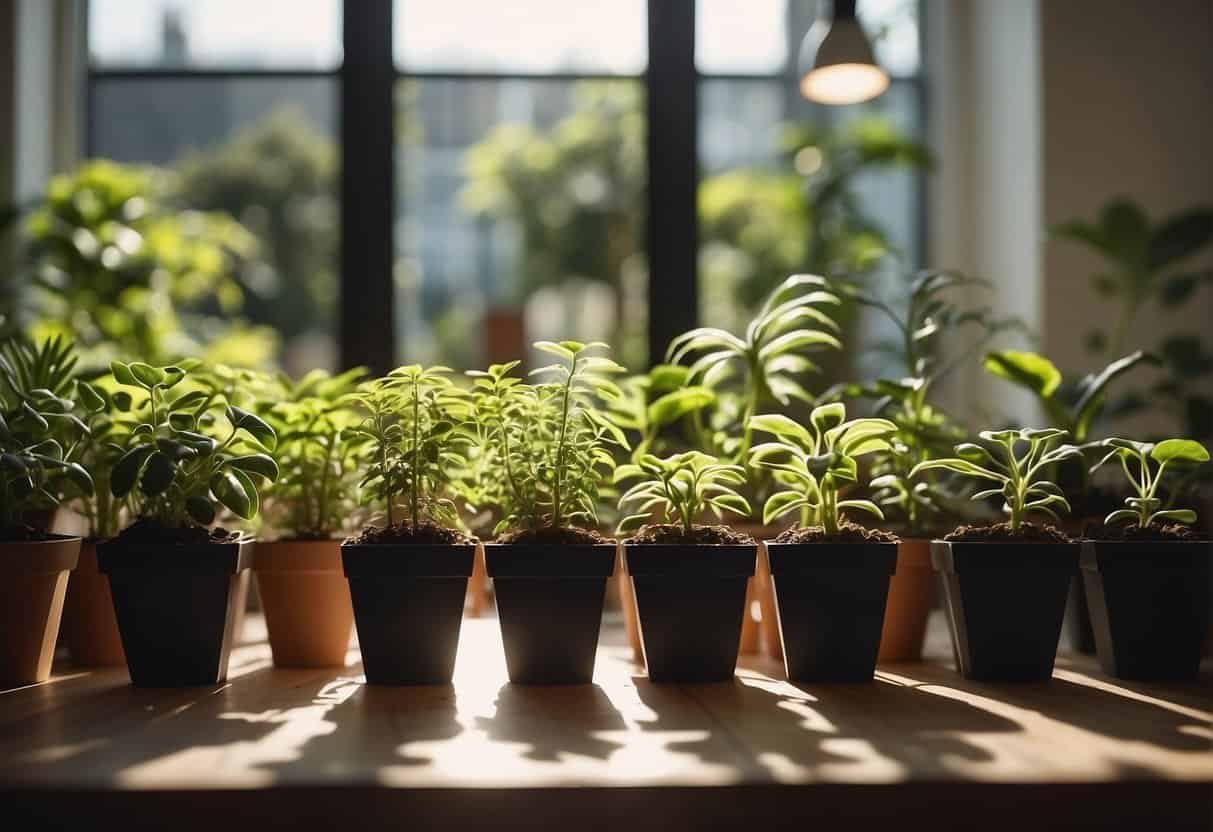
Propagation is a great way to create new plants that are genetically identical to the parent plant. This method is often used for plants that are difficult to grow from seed, such as some fruit trees, or for plants that are slow to grow from seed, such as some perennials.
Propagation can be done in a number of ways, including by taking cuttings, dividing plants, or grafting.
Seed starting, on the other hand, is a popular method of growing plants from scratch. This method is often used for annuals and vegetables, as well as for plants that are easy to grow from seed.
Seed starting allows gardeners to choose from a wide variety of plants, including rare and heirloom varieties, and can be a cost-effective way to grow a large number of plants. However, it can also be time-consuming and requires careful attention to temperature, moisture, and light.
Understanding Plant Propagation
Plant propagation is the process of creating new plants from existing ones. It is an essential technique used by gardeners to increase their plant population, preserve rare plant species, and save money.
Plant propagation can be done in many ways, including seed starting, root division, and cuttings.
Basics of Plant Propagation
Plant propagation involves creating new plants from existing ones. This can be done by taking cuttings from a plant and rooting them in soil.
Gardeners can also propagate plants by dividing them, which involves separating a plant’s roots into two or more parts and transplanting them into new soil.
Methods of Propagation
There are several methods of plant propagation, including stem cuttings, leaf cuttings, and cane cuttings.
Stem cuttings involve taking a section of stem from a plant and rooting it in soil. Leaf cuttings involve taking a leaf from a plant and rooting it in soil. Cane cuttings involve taking a section of cane from a plant and rooting it in soil.
Gardeners can also use rooting hormone to encourage the growth of roots on cuttings.
Benefits of Propagation
Plant propagation has many benefits. It allows gardeners to increase their plant population without having to purchase new plants.
It also allows gardeners to preserve rare plant species and save money. Additionally, plant propagation can be used to create plants that are better adapted to a particular environment.
Seed Starting Essentials
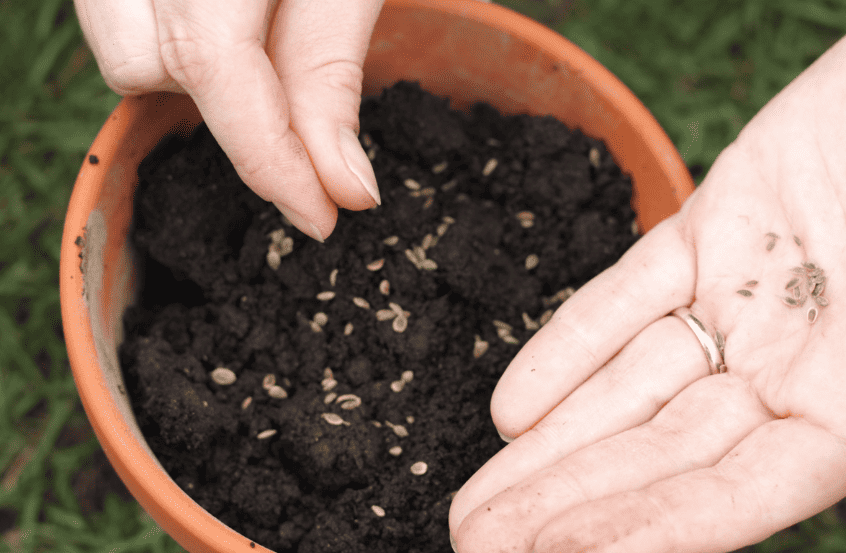
Introduction to Seed Starting
Seed starting is the process of growing plants from seeds indoors before transplanting them outside. It allows gardeners to start their plants earlier in the season and gives them more control over the growing conditions.
Seed starting can be a fun and rewarding experience, but it does require some knowledge and preparation.
Choosing the Right Seeds
When choosing seeds for starting, it is important to consider the growing conditions of your garden. Some plants require specific soil types, sunlight, and temperatures to thrive.
It is also important to choose seeds that are viable and have a high germination rate. Seed packets will usually have information about the ideal growing conditions and germination rates.
Seed Starting Techniques
There are several techniques for starting seeds, including direct sowing, stratification, and scarification.
Direct sowing involves planting the seeds directly into the soil outdoors. Stratification involves exposing the seeds to cold temperatures to simulate winter conditions, which can help break dormancy and improve germination rates.
Scarification involves nicking or scratching the seed coat to improve water absorption and germination rates.
To start seeds indoors, gardeners will need containers, a seed starting mix, and a light source.
Containers can be anything from plastic trays to recycled egg cartons. The seed starting mix should be light and well-draining and can be purchased or made at home.
A light source is necessary for seedlings to grow properly and can be provided by a sunny window or grow lights.
Growing Conditions for Seeds and Seedlings
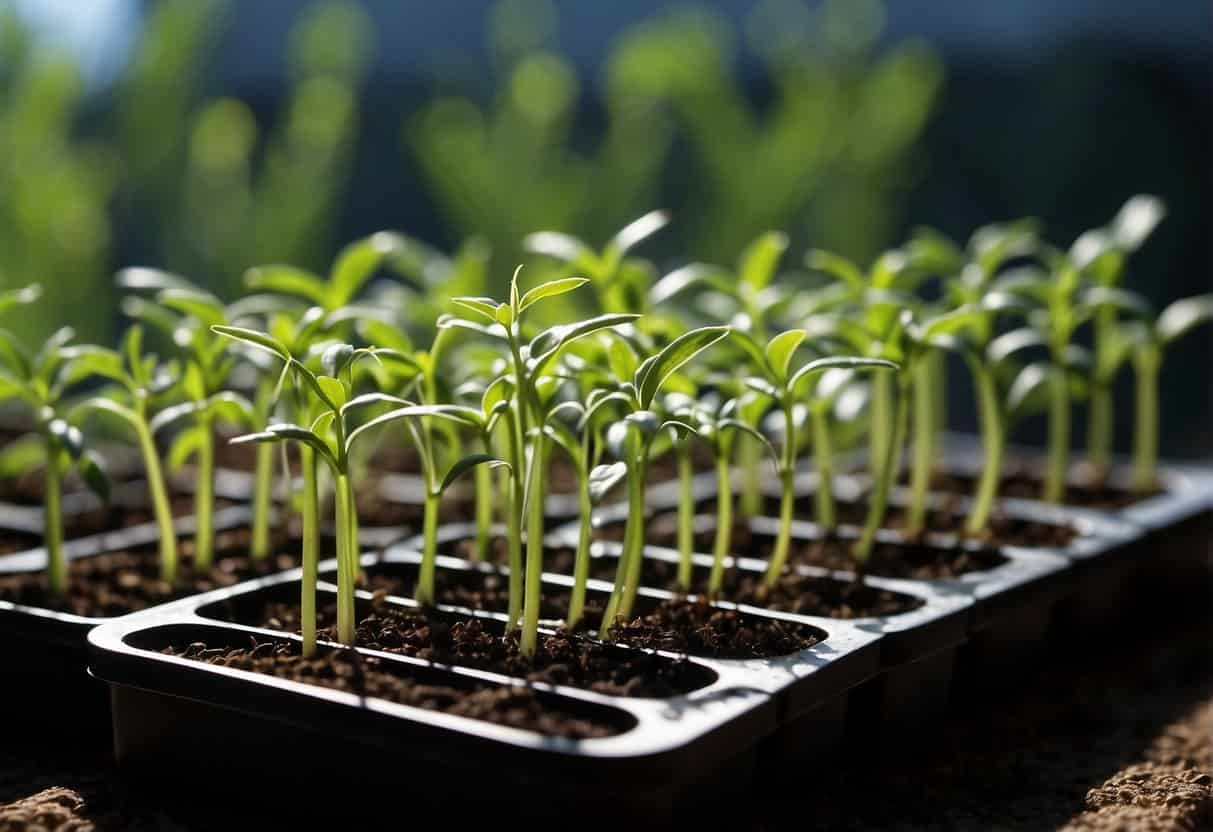
When growing plants from seeds or seedlings, it is important to provide the right growing conditions to ensure their healthy growth. Some of the key factors to consider are light requirements, temperature and humidity control, watering and feeding.
Light Requirements
Light is an essential factor in the growth of plants. Seeds require light to germinate, and seedlings need adequate light to grow healthy and strong.
When starting seeds indoors, it is important to provide them with sufficient light. Grow lights are a great option for providing the necessary light, especially during the winter months when natural light is limited.
Temperature and Humidity Control
Temperature and humidity are also crucial factors in the growth of seeds and seedlings. Seeds require a warm and moist environment to germinate, and seedlings need to be kept at a consistent temperature and humidity level to grow properly.
A heat mat can be used to provide the necessary warmth for seed germination, and plastic wrap can be used to keep the humidity level high.
As the seedlings grow, it is important to gradually decrease the humidity level to prevent mold and disease.
Watering and Feeding
Watering and feeding are important factors in the growth of seeds and seedlings.
When starting seeds, it is important to use a well-draining soil mix and to water the seeds lightly to prevent them from becoming waterlogged.
As the seedlings grow, they will require more water, but it is important not to overwater them. Feeding the seedlings with a balanced fertilizer can also help promote healthy growth.
Propagation vs. Seed Starting
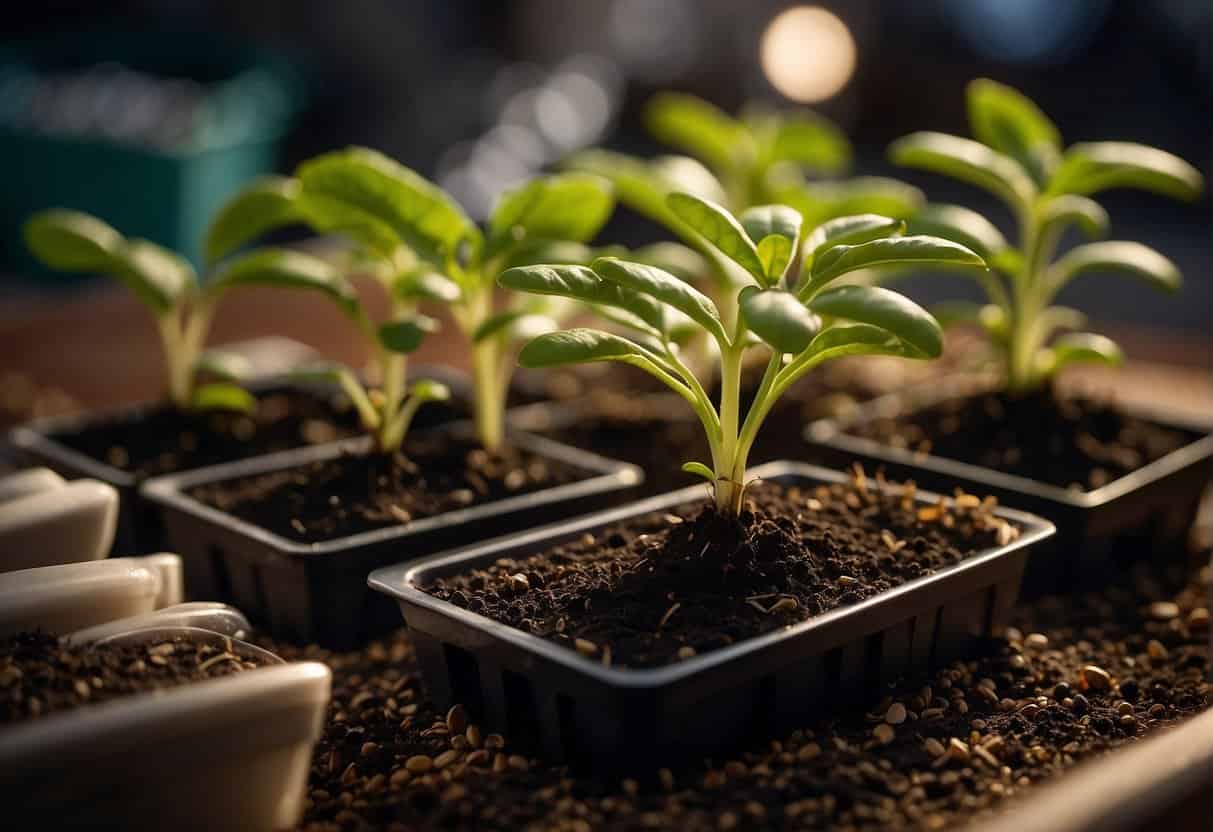
Comparing Techniques
Plant propagation and seed starting are two common techniques used by gardeners to grow plants. The main difference between the two is that propagation involves using a part of an existing plant to grow a new one, while seed starting involves sowing seeds to grow a new plant.
Propagation is a useful technique for gardeners who want to create more plants from their existing ones. It can be done indoors or outdoors and involves taking cuttings from a plant, rooting them, and then transplanting them into a new location.
This method is particularly useful for plants that are difficult to grow from seed or for gardeners who want to create exact clones of their existing plants.
Seed starting, on the other hand, involves sowing seeds indoors or outdoors and then transplanting the seedlings into a new location once they have grown large enough.
This method is useful for gardeners who want to grow a large number of plants from seeds and who want to ensure that the plants are healthy and disease-free.
Choosing Between Propagation and Seed Starting
When deciding between propagation and seed starting, gardeners should consider several factors.
First, they should consider the type of plant they want to grow. Some plants are easier to propagate than others, while some are easier to grow from seed.
Second, gardeners should consider the time of year and the growing conditions. Propagation is best done during the plant’s active growing season, while seed starting can be done year-round.
Third, gardeners should consider their own skills and experience. Propagation requires some knowledge of plant biology and the right tools, while seed starting can be done with basic gardening supplies.
Combining Both Methods
Gardeners can also combine propagation and seed starting to create a more diverse and healthy garden.
For example, they can propagate their existing plants and then supplement them with seed-grown plants to create a more diverse garden.
Combining both methods can also help gardeners to ensure that they have a steady supply of healthy plants. If a propagated plant fails to thrive, gardeners can replace it with a seed-grown plant.
Practical Tips for Gardeners
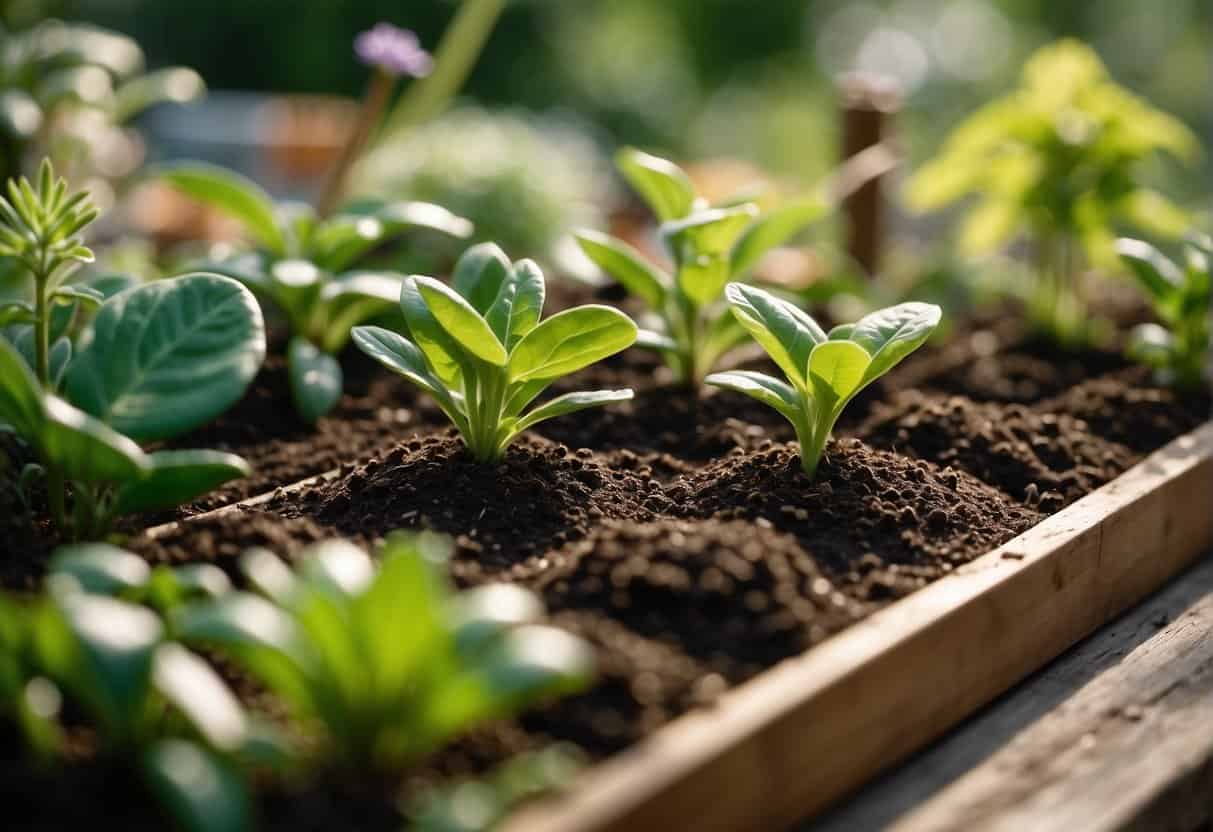
Timing and Planning
Timing is everything when it comes to seed starting and propagation. Gardeners should plan ahead and start their seeds at the right time to ensure a successful harvest.
The timing can vary depending on the plant, so it’s important to research and understand each plant’s specific needs.
Gardeners should also consider the length of time it takes for each plant to mature and plan accordingly. Some plants require a longer growing season than others, so starting seeds indoors can help extend the growing season.
Equipment and Supplies
Gardeners need to have the right equipment and supplies for successful propagation and seed starting.
Some essential items include pots, trays, plastic bags, vermiculite, potting mix, flats, and peat pellets.
It’s important to use clean equipment and supplies to prevent the spread of disease. Gardeners should also label their plants to keep track of what they are growing and when they started.
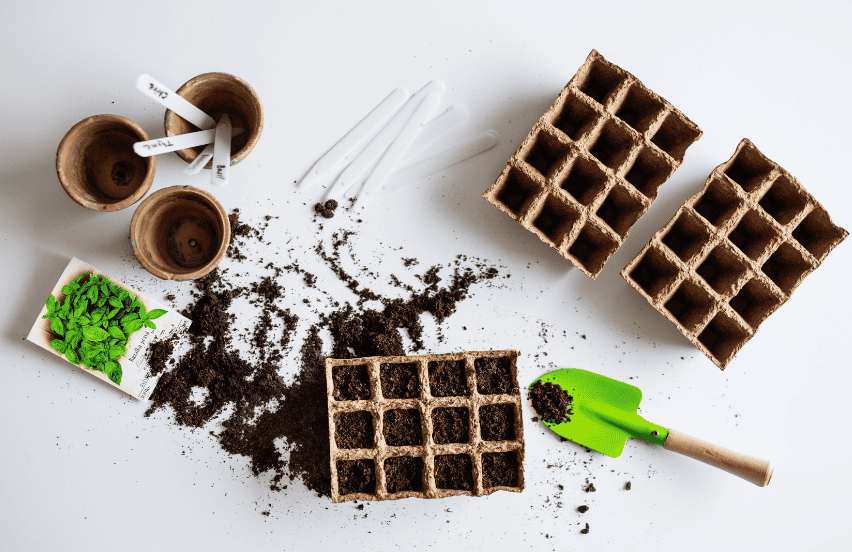
Caring for Young Plants
Once plants have been started, gardeners need to care for them properly.
This includes providing the right amount of water, light, and nutrients.
Gardeners should also be aware of the need for pollination. Some plants require pollinators like bees to produce fruit or vegetables. If pollinators are not present, gardeners may need to manually pollinate their plants.
Common Plants and Their Specific Needs
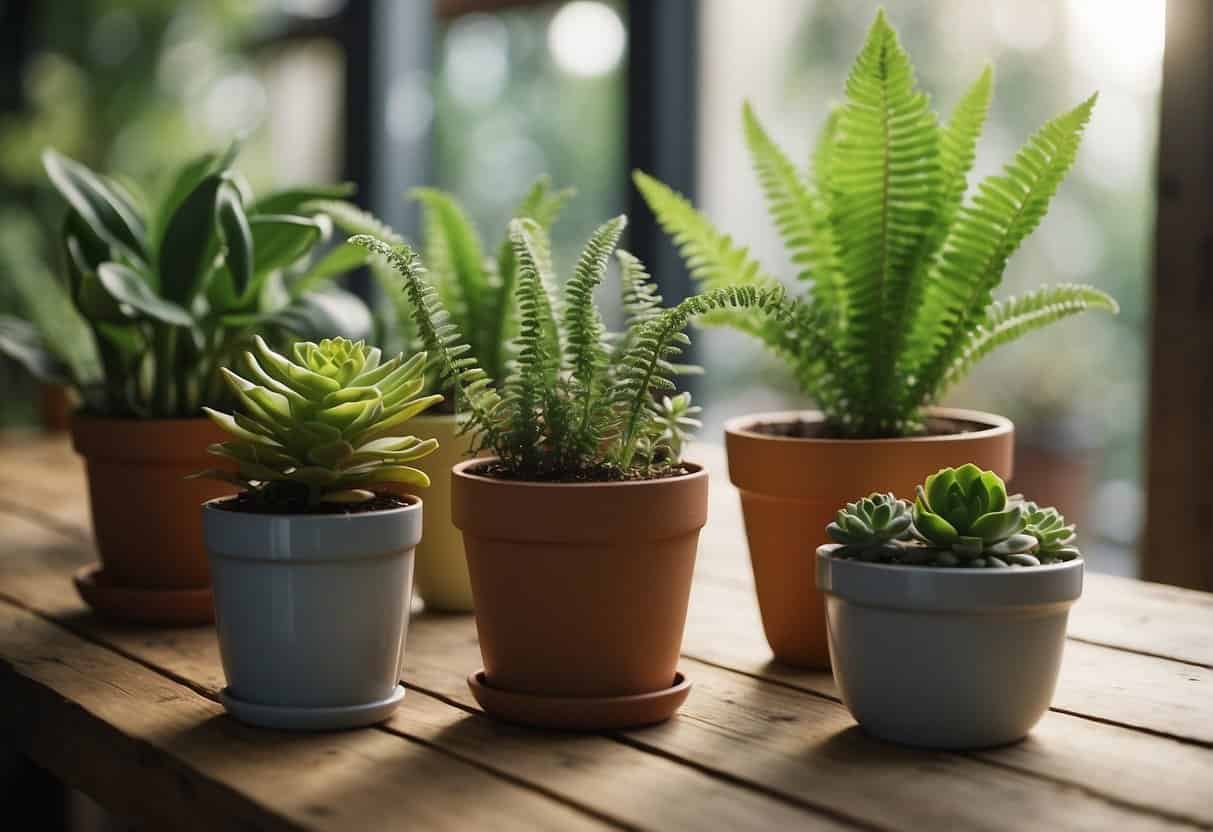
When choosing between propagation and seed starting, it’s important to consider the specific needs of your plants. Here are some common plants and their specific needs:
Vegetables and Fruits
Vegetables and fruits are popular plants to grow in gardens, but they have different needs when it comes to propagation and seed starting.
For example, tomatoes and peppers are best propagated from stem cuttings, while vegetable seeds such as carrots, lettuce, spinach, broccoli, peas, squash, and beets are best started from seed.
Fruit trees, on the other hand, can be propagated from cuttings or grafting.
Flowers and Ornamentals
Flowers and ornamentals are another popular choice for gardeners.
Annuals such as marigolds, petunias, and zinnias are best started from seed, while perennials such as daylilies and hostas can be propagated by division.
Bulbs such as tulips and daffodils can be propagated by offsets or bulbils.
Houseplants
Houseplants are a great way to add some greenery to your home.
Propagation is a popular way to grow new houseplants, and many plants can be propagated from stem cuttings or leaf cuttings.
Some popular houseplants that can be propagated include spider plants, pothos, and philodendrons.
Advanced Seed Starting and Propagation
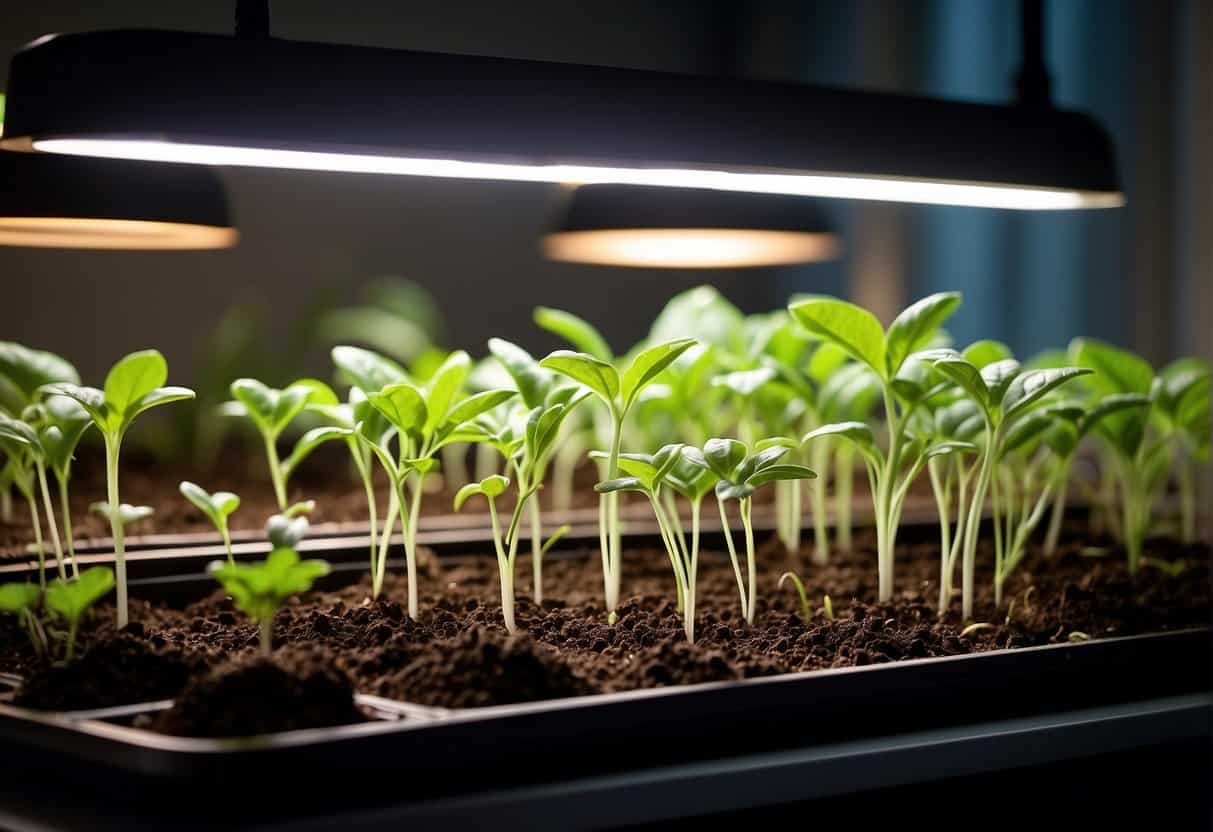
When starting plants from seed, there are many factors to consider.
Some gardeners prefer to propagate their plants through cuttings or other asexual means, while others prefer to start from seed.
While both methods have advantages and disadvantages, advanced seed starting and propagation techniques can help maximize success in either case.
Hybrid and Open-Pollinated Varieties
One of the benefits of starting plants from seed is the ability to choose from a wide variety of vegetable and flower types.
When selecting seeds, gardeners can choose from hybrid and open-pollinated varieties.
Hybrid varieties are the result of crossing two or more different parent plants, resulting in offspring with desirable traits.
Open-pollinated varieties, on the other hand, are the result of natural pollination by wind, bees, or other insects.
While hybrid varieties may offer improved disease resistance and plant adaptation, open-pollinated varieties are often more adapted to local climate and growing conditions.
Disease Resistance and Plant Adaptation
Disease resistance is an important consideration when selecting seeds for advanced seed starting and propagation.
Some varieties are naturally more resistant to certain diseases than others.
For example, some tomato varieties are resistant to common diseases such as verticillium and fusarium wilt.
Plant adaptation is also an important factor to consider.
Gardeners should select seeds that are adapted to their local climate and growing conditions.
For example, gardeners in cool climates may want to select seeds that are adapted to cooler temperatures, while those in warmer climates may want to select seeds that are adapted to hot, dry conditions.
Maximizing Germination and Growth
To maximize germination and growth, gardeners should use high-quality growing medium and small seeds.
A high-quality growing medium will provide the right balance of nutrients and moisture for the seeds to germinate and grow.
Small seeds, such as those of lettuce and other greens, require special care when starting.
Gardeners should use a fine seed-starting mix and cover the seeds lightly with soil. They should also keep the soil moist but not wet, and provide adequate light for the seedlings to grow.
Storing Seeds and Propagation Material

Proper Seed Storage Techniques
Storing seeds properly is crucial to ensure their viability and shelf life.
Seeds should be kept in a cool, dry place to prevent moisture and fungal growth.
Clear plastic bags or laminated foil packets are ideal for storing seeds as they offer protection from moisture and light.
It is important to label the packets with the seed variety and date of collection to keep track of their viability.
For surplus seeds, paper packets are a great option.
They allow for air circulation and reduce the respiration rate of the seeds, which helps to maintain their viability.
It is important to store paper packets in a cool, dry place to prevent moisture buildup.
Extending Viability and Shelf Life
Extending the viability and shelf life of seeds is possible through proper storage techniques.
Refrigeration is a great option for long-term storage as it reduces the respiration rate of the seeds, which slows down the aging process.
However, it is important to note that seeds should be kept in an airtight container to prevent moisture buildup.
Propagation material, such as rooting hormone and growing medium, should also be stored properly to ensure their effectiveness.
Rooting hormone should be kept in a cool, dry place to prevent moisture buildup and loss of potency.
Growing medium should be stored in a dry place to prevent mold growth and loss of nutrients.
Frequently Asked Questions
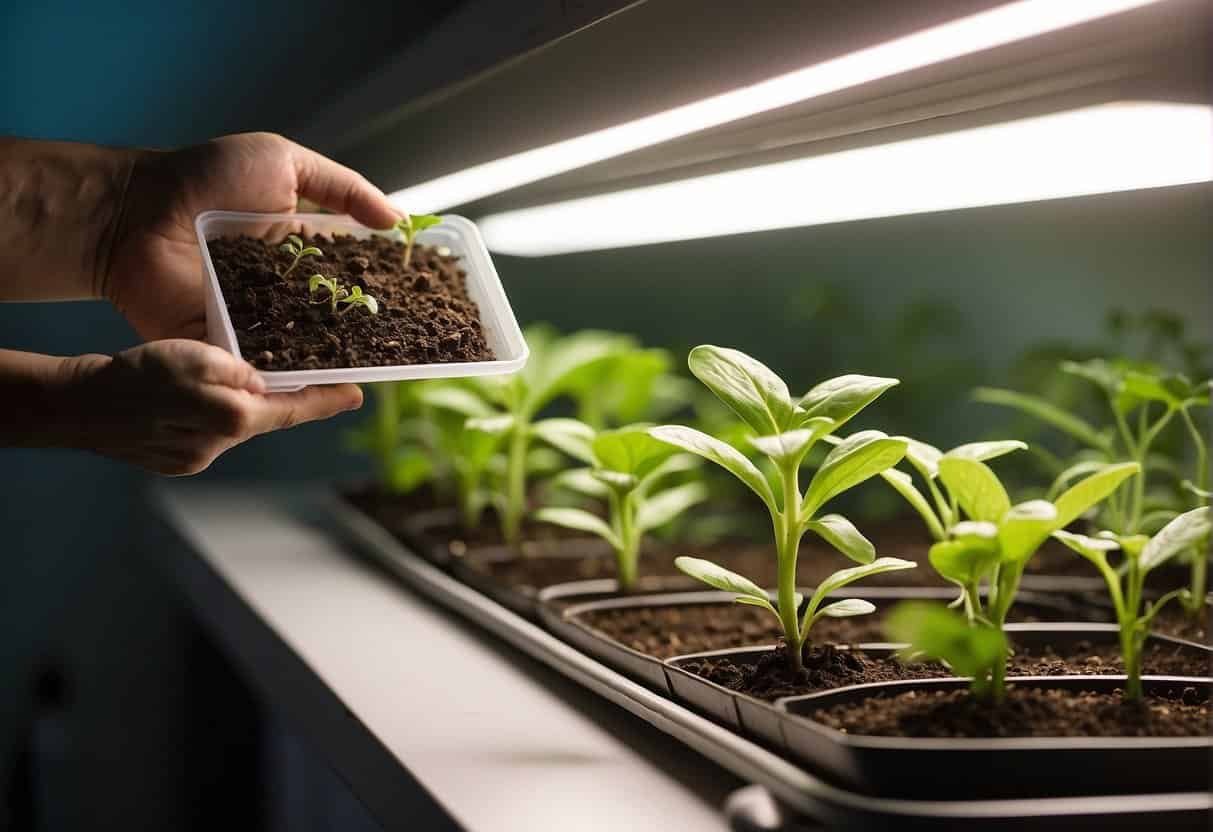
What are the primary advantages of propagating plants from cuttings?
Propagating plants from cuttings can be advantageous because it allows gardeners to produce exact clones of desired plants.
Additionally, it can be faster than starting plants from seeds, and it can be done year-round with the right equipment.
What are the common disadvantages of starting plants from cuttings?
Starting plants from cuttings can be challenging because it requires specialized knowledge and equipment.
Additionally, not all plants can be propagated from cuttings, and some may not root successfully.
How does seed starting benefit plant growth compared to vegetative propagation?
Seed starting can be advantageous because it allows gardeners to grow a large number of plants at once.
Additionally, it can be less expensive than propagating plants from cuttings.
Seed starting also allows gardeners to experiment with different varieties and to grow plants that may not be available in their area.
What challenges might one face when germinating plants from seeds?
Germinating plants from seeds can be challenging because it requires the right environmental conditions, including proper temperature, moisture, and light.
Additionally, some seeds may have a hard outer coating that needs to be broken down before they can germinate.
In what situations is it preferable to use layering propagation over other methods?
Layering propagation can be advantageous when gardeners want to propagate plants that are difficult to root from cuttings.
Additionally, it can be useful for producing plants that are genetically identical to the parent plant.
Can you explain the differences in growth patterns between plants started from seeds and those from cuttings?
Plants started from seeds may exhibit more genetic variation than those from cuttings.
Additionally, plants started from seeds may take longer to mature than those from cuttings.
However, plants started from seeds may have stronger root systems and be better adapted to their environment than those from cuttings.

